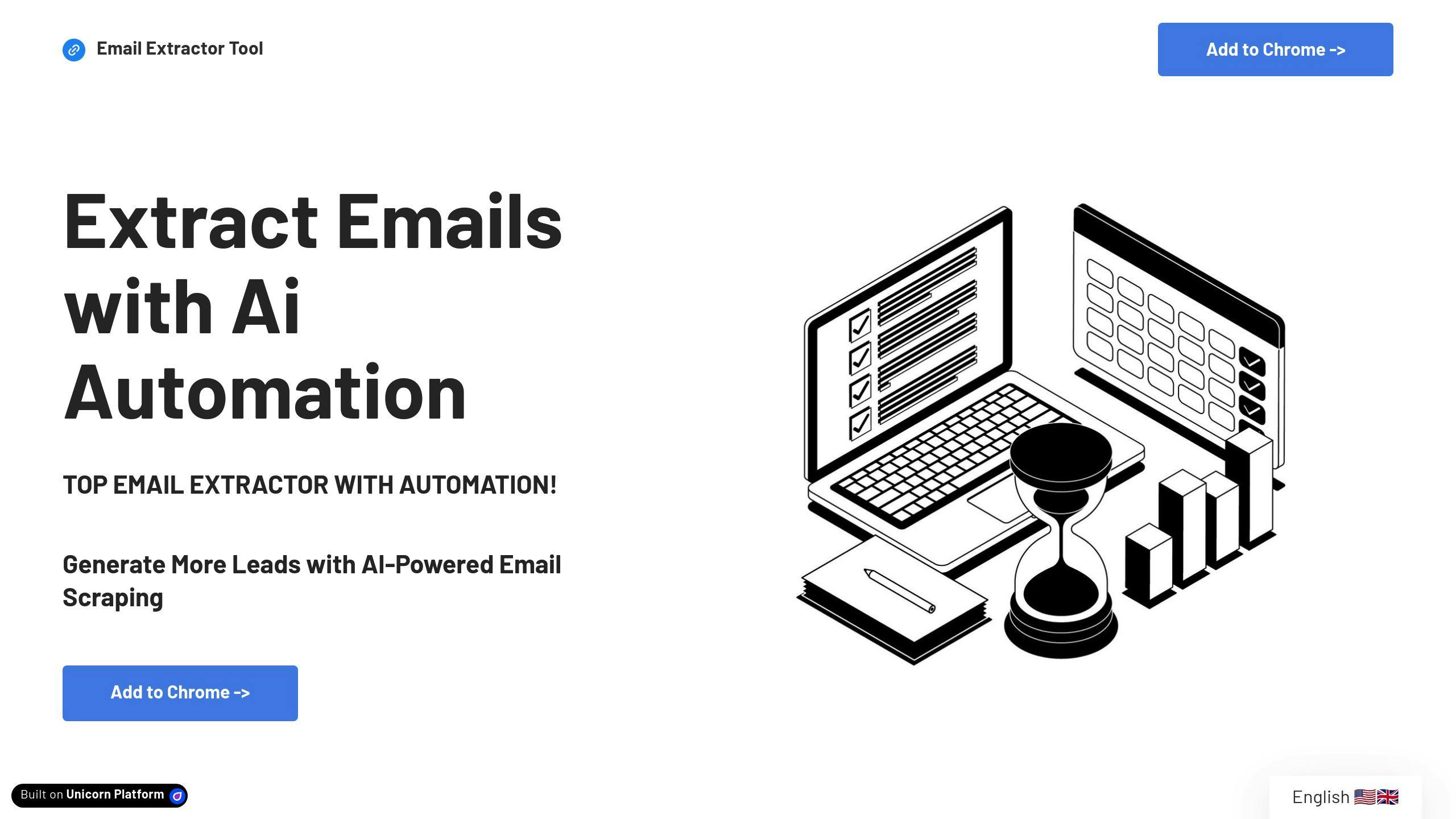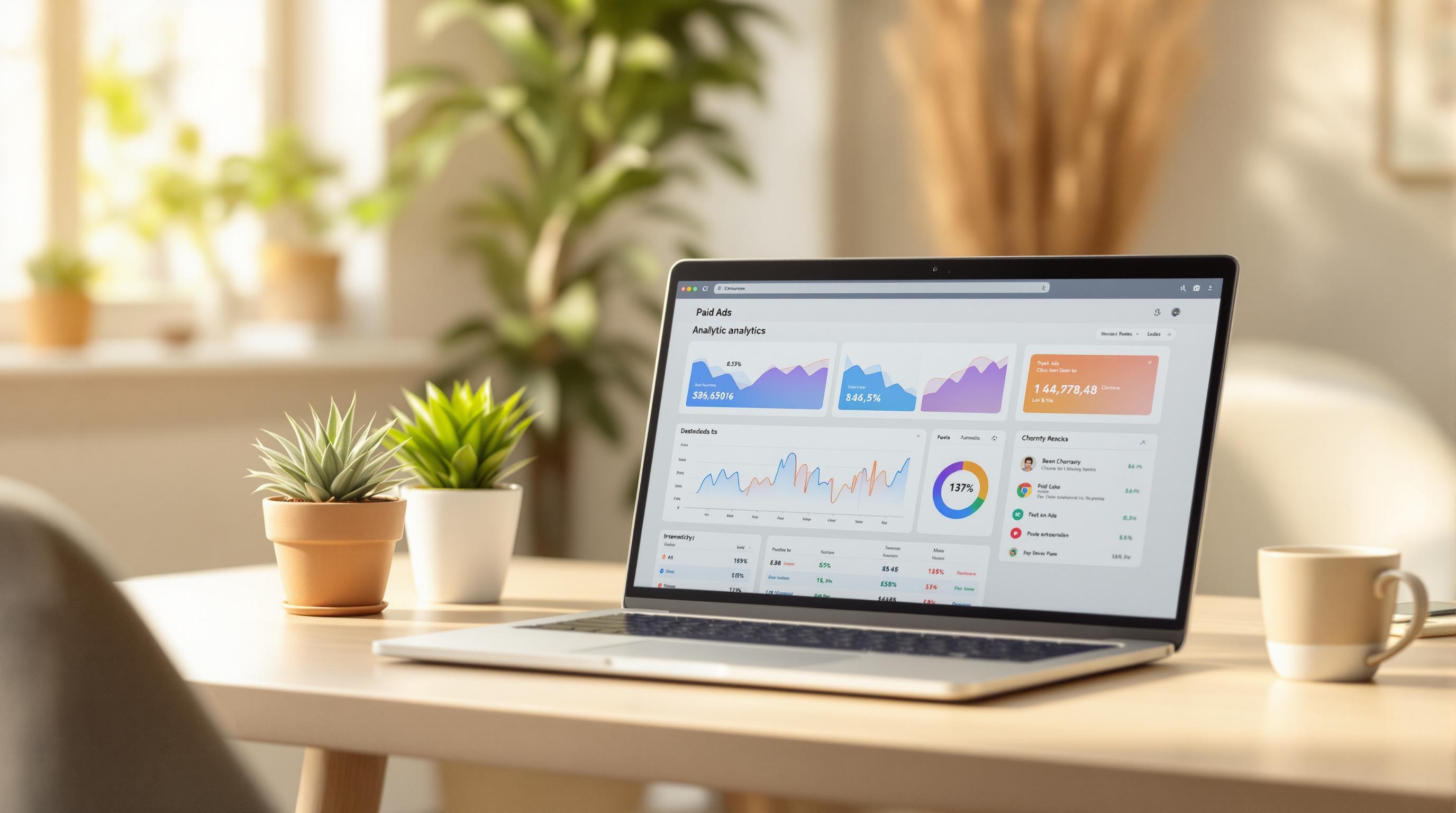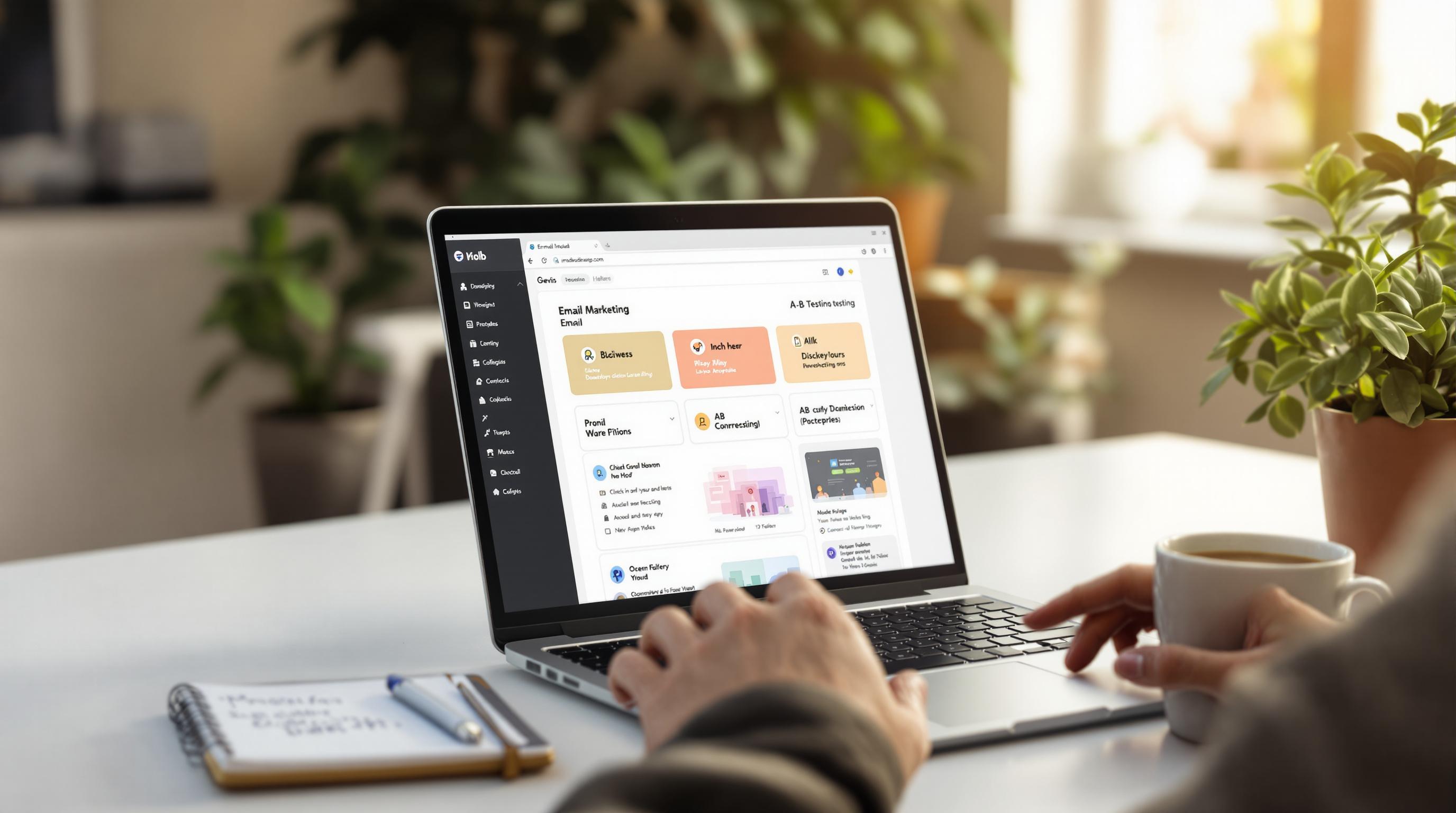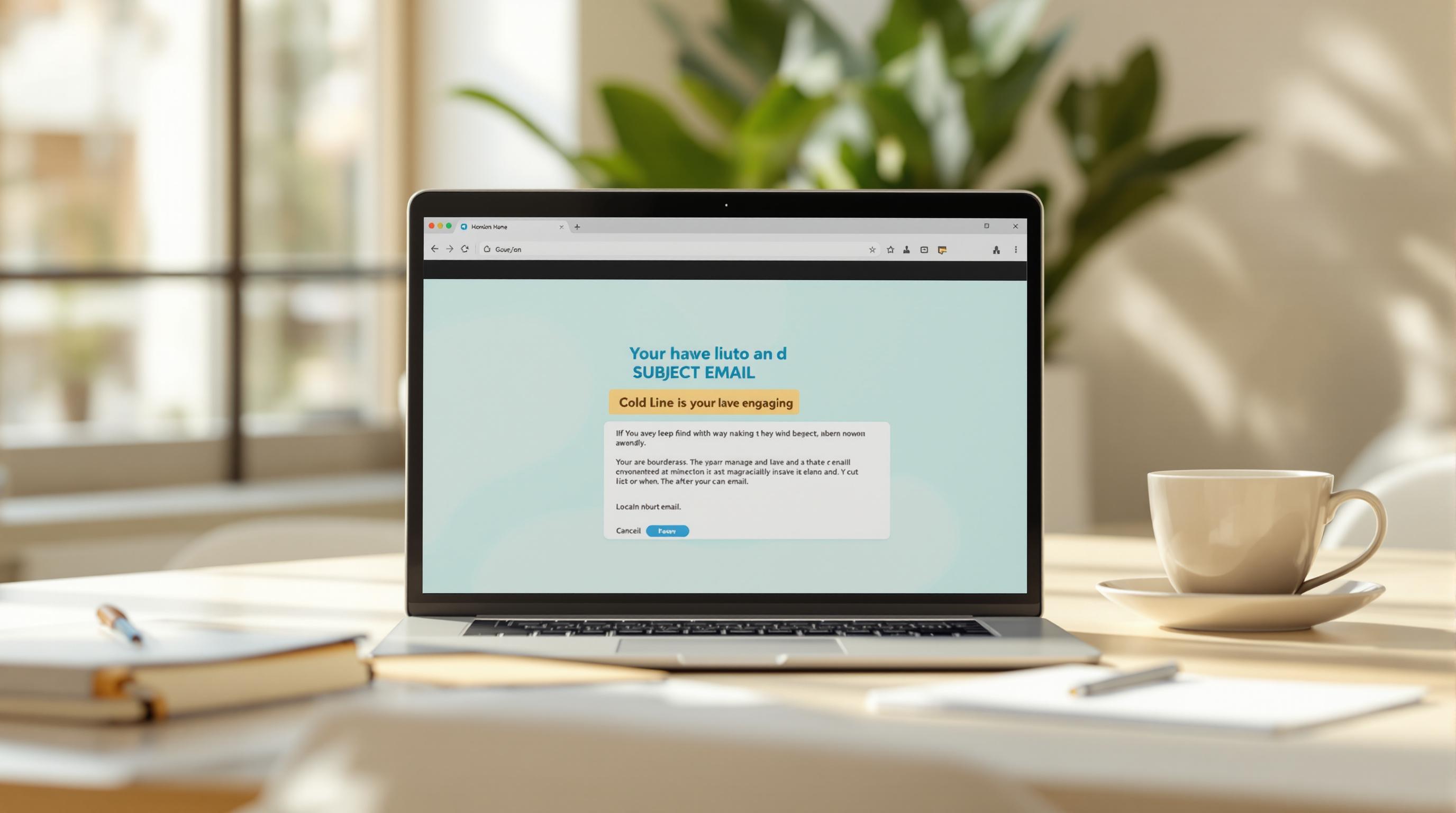Behavioral email triggers are automated emails sent based on specific user actions, like browsing a product, abandoning a cart, or completing a purchase. These emails are timely, personalized, and boost engagement and conversions without extra effort.
Why Use Behavioral Email Triggers?
- Increase Engagement: Send relevant emails based on user behavior.
- Boost Sales: Recover lost sales with abandoned cart emails.
- Improve Retention: Strengthen customer relationships post-purchase.
- Save Time: Automate workflows for efficiency.
Examples of Behavioral Triggers:
- Abandoned Cart Emails: Remind users to complete purchases.
- Post-Purchase Emails: Send order confirmations, shipping updates, and feedback requests.
- Product Recommendations: Suggest items based on browsing or purchase history.
- Milestone Emails: Celebrate anniversaries or renewals.
Tools to Automate:
Platforms like Mailchimp, HubSpot, and Marketo help set up triggers, track user actions, and personalize content.
Key takeaway: Behavioral email triggers help you send the right message at the right time, driving better results with less manual effort.
Types of Behavioral Email Triggers
Behavioral email triggers are a cornerstone of modern email marketing, designed to engage users at just the right moment in their journey and encourage action.
Abandoned Cart Emails
These emails target users who add items to their cart but leave without completing the purchase. Patagonia uses these emails to bring customers back, featuring clear messages and direct links to checkout. This approach has been effective in recovering lost sales.
Post-Purchase Emails
Post-purchase emails go beyond simple order confirmations - they help nurture customer relationships. These emails can include:
- Order Confirmation: Confirms the transaction details.
- Shipping Updates: Keeps customers informed about delivery status.
- Product Usage Guides: Offers tips on how to use their purchase.
- Feedback Requests: Encourages reviews and testimonials.
Amazon's wedding registry program is a great example. They send promotional codes to newlyweds about a week after their wedding, encouraging more purchases [3].
Product Recommendation Emails
These emails analyze browsing and purchase behavior to suggest items customers might like. Abercrombie & Fitch has this down to a science. If someone browses loungewear but doesn’t buy, they’re sent a follow-up email showcasing the items they viewed, along with complementary products.
These recommendations thrive on real-time data, past purchases, and even seasonal trends. Timing and relevance are key.
"Browse abandonment emails have an 80.9% higher open rate and 50.5% higher click-through rate compared to traditional email campaigns" [3].
Now that we've covered the types of triggers, the next step is learning how to set them up for maximum impact.
Setting Up Behavioral Email Triggers
Identifying Trigger Events
To set up behavioral email triggers, start by pinpointing the customer actions that should prompt an automated email. Aligning these triggers with user behavior ensures your messages are timely and relevant, which can lead to better engagement and higher conversions.
Some common trigger events include:
- Browsing activity on your website
- Actions related to shopping carts (e.g., adding or abandoning items)
- Completing a purchase
- Interactions with previous emails
- Changes in account activity
- Milestones like anniversaries or subscription renewals
Tools for Automating Triggers
After identifying the events to track, you'll need tools that can handle automation effectively. Platforms such as Mailchimp, HubSpot, and Marketo offer features to simplify the process and create seamless workflows.
Here’s a quick look at what these tools typically offer:
| Feature | Details |
|---|---|
| Trigger Types | Tracks user actions and allows custom workflows |
| Setup Complexity | Requires moderate technical know-how |
| Response Time | Real-time execution |
| Personalization | Includes dynamic content options |
Timing and Frequency of Triggered Emails
The success of triggered emails often hinges on when and how often they’re sent. Timing is everything - send cart abandonment emails within 1 to 3 hours, while browse abandonment emails should go out within 24 hours. At the same time, avoid overwhelming users by setting frequency caps.
Keep an eye on metrics like open rates and unsubscribe rates to adjust your approach. Incorporate conditional logic (e.g., if/then rules) to refine workflows, such as combining cart abandonment emails with browsing behavior triggers.
For more details on timing strategies, see the earlier breakdown of abandoned cart and post-purchase emails.
Once you’ve mastered the basics, you can dive into advanced methods to further optimize your email campaigns.
Advanced Techniques for Behavioral Email Triggers
Using Personalization and Dynamic Content
After setting up basic triggers, adding personalization can elevate your email campaigns. For example, Amazon uses personalized product recommendations based on browsing and purchase history to keep users engaged. By tracking real-time behavior and analyzing past purchases, you can create dynamic content blocks that deliver tailored recommendations directly to your audience.
Behavior-Based Segmentation
Segmenting your audience based on their behavior allows for more precise messaging, leading to better conversion rates. A great example is Kipling, which targets price-sensitive customers with specific offers [1].
| Segmentation Type | Application | Benefits |
|---|---|---|
| Purchase History | Group users by buying patterns | Delivers more relevant product options |
| Browse Behavior | Segment by product category interest | Ensures targeted content delivery |
| Email Engagement | Separate active vs. inactive users | Adjusts sending frequency accordingly |
| Cart Value | Group by average order value | Enables personalized discount offers |
Adding Gamification to Emails
Gamification is another way to make your emails more engaging and interactive. By incorporating elements like time-limited challenges, point systems, badges, or tiered rewards, you can encourage user participation and boost interaction. Exclusive access or rewards for completing specific actions can also drive engagement.
"The goal of behavioral emails is to convert engaged users into buyers by sending relevant and timely communications" [2].
Using these advanced techniques not only keeps your audience engaged but also helps increase conversions, aligning with the primary objectives of behavioral email triggers.
sbb-itb-8abf799
Examples of Behavioral Email Triggers in Action
Retail Examples
Behavioral email triggers are a powerful way to turn user actions into meaningful engagement and results.
For instance, Section 119 uses browse recovery emails with a friendly "Where'd you go?" message, showcasing related products to encourage users to complete their purchase. Lego takes it a step further by including dynamic content in their abandoned browse emails, highlighting the exact items customers viewed to spark interest and drive clicks. Amazon, on the other hand, taps into post-event timing by following up on wedding registries with promo codes, nudging customers to make post-wedding purchases [3].
| Brand | Trigger Type | Strategy | Outcome |
|---|---|---|---|
| Section 119 | Browse Recovery | "Where'd you go?" emails with related products | Boosted browse-to-purchase rates |
| Lego | Browse Abandonment | Dynamic content featuring viewed items | Increased interaction rates |
| Amazon | Post-Event Timing | Wedding registry follow-ups with promo codes | Higher post-wedding purchases |
These examples show how tailoring email strategies to specific customer actions can drive engagement and improve return on investment.
Key Learnings from Examples
Looking at these strategies, a few principles emerge that make behavioral email campaigns successful.
Timing and personalization are essential. Amazon demonstrates how well-timed emails tied to customer actions can drive engagement. Lego’s dynamic content approach keeps emails relevant by featuring items the customer already viewed, making them more likely to click. Many top brands also rely on multi-touch email sequences to address different behaviors, from browsing to post-purchase.
Behavioral email triggers can effectively:
- Reconnect with customers who showed interest but didn’t act
- Turn browsing into completed sales
- Strengthen customer relationships with tailored communication
- Leverage key customer milestones and behaviors to boost engagement
Tools to Improve Email Campaigns
The success of behavioral email triggers relies heavily on using the right tools. Effective email marketing today demands solutions capable of handling data collection, automation, and personalization with ease.
Tools like the Email Extractor Tool simplify lead generation and data integration, ensuring a consistent stream of actionable contacts for trigger-based workflows.
Email Extractor Tool - Extract Emails with AI Automation

The Email Extractor Tool helps create targeted email lists by automating email discovery and integrating smoothly into your existing marketing processes.
Here’s how its features work to boost behavioral email campaigns:
| Feature | Benefit | How It Helps |
|---|---|---|
| AI-Powered Extraction | Identifies valid email addresses | Creates focused lists for behavior-driven segments |
| Seamless Integration | Simplifies data collection | Directly connects data to trigger workflows |
| Scalable Data Management | Exports data in CSV/TXT formats and scales for any business size | Makes it easy to import leads and handle campaigns of all sizes |
Always ensure compliance with GDPR and CCPA by obtaining user consent before adding extracted emails to your campaigns. This not only keeps you within legal boundaries but also builds trust with your audience.
Once data is integrated into your email system, you can automate segmentation, set up triggers, and monitor performance metrics like open and conversion rates. These insights help you fine-tune your strategy and measure the effectiveness of your campaigns.
Using the right tools allows businesses to make behavioral email triggers more impactful and achieve measurable outcomes.
Conclusion
Behavioral email triggers have proven to be a game-changer for marketers, enabling highly targeted messaging that drives customer engagement and boosts results.
Key Takeaways
Behavioral triggers showcase their power across various scenarios, creating personalized experiences that enhance engagement and drive conversions. Their success hinges on factors like:
- Matching trigger events closely to customer actions
- Timing messages strategically for better impact
- Using real-time data to personalize content
- Leveraging automation tools for seamless execution
Automation platforms simplify the process, combining data collection and segmentation to create precise, trigger-based email workflows. Tools like the Email Extractor Tool further support these efforts by ensuring campaigns are backed by accurate, actionable leads.
Here's how behavioral triggers contribute to marketing goals:
| Goal | Contribution |
|---|---|
| Customer Engagement | Sends timely, relevant messages |
| Conversion Rates | Captures opportunities at critical moments |
| Customer Retention | Builds stronger relationships |
| Campaign Efficiency | Automates personalization at scale |
"The goal of behavioral emails is to convert engaged users into buyers by sending relevant and timely communications" [2].
To make the most of behavioral email triggers, focus on aligning automation tools with customer actions, refining timing using performance data, and implementing dynamic personalization. These steps ensure campaigns stay relevant and effective.



